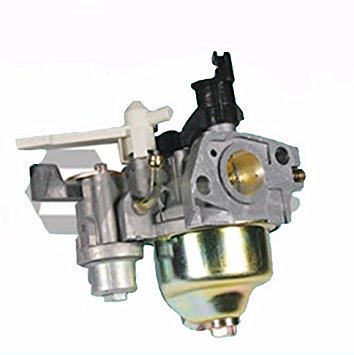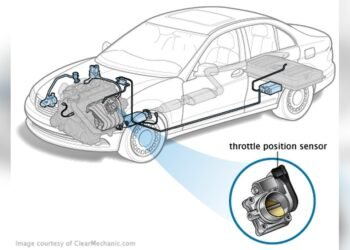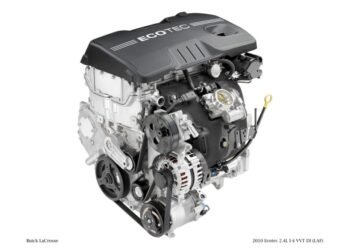Troubleshooting a Honda small engine carburetor often starts with checking the fuel flow and cleaning the carburetor. A clogged air filter or bad spark plug can also cause issues.
Honda small engines power a wide range of equipment, from lawn mowers to generators, making their performance crucial for both homeowners and professionals. Carburetor problems can manifest as rough running, difficulty starting, or an engine that won’t start at all.
These issues disrupt your day and delay your tasks. Understanding the common troubleshooting steps for a Honda small engine carburetor is essential. This knowledge ensures your equipment remains in top working condition. Quick and effective troubleshooting not only saves time but also extends the life of your engine. Armed with the right information, you can address many common problems yourself, maintaining the efficiency and reliability of your Honda-powered equipment.
Introduction To Honda Small Engine Carburetors
Understanding Honda small engine carburetors is key to optimal engine performance. These precision devices mix air and fuel for internal combustion. Proper maintenance ensures engines run smoothly.
Common Signs Of Carburetor Issues
- Engine starts hard or doesn’t start at all
- Uneven running, such as surging or stalling
- Poor fuel economy points to inefficiency
- Black smoke from exhaust indicates rich fuel mixture
- Foul smell of gasoline suggests a leak or overflow
The Role Of The Carburetor In Engine Performance
The carburetor is crucial for engine health. It ensures the right mix of air and fuel. This mix powers the engine. A well-tuned carburetor leads to better acceleration, smooth idling, and fuel efficiency.
Identifying Carburetor Problems
Carburetor issues can halt your Honda engine’s performance. Quick identification is key. Signs are clear when you know what to look for. Let’s dive into common carburetor problems and their symptoms.
Engine Starts Then Stalls
Stalling engines often point to carburetor trouble. A clean, well-adjusted carburetor is vital for smooth operation. Here’s what to watch for:
- Dirty jets or fuel passages disrupt the flow.
- A sticky float hinders proper fuel level management.
- Worn gaskets or seals may lead to leaks.
Engine Runs Rough Or Won’t Idle
An engine that runs roughly or won’t idle needs attention. Consistent idling demands precise air-fuel mix. Check these areas:
- Inspect the idle adjustment.
- Ensure the choke operates smoothly.
- Look for vacuum leaks around the carburetor base.
Engine Won’t Start
An engine that won’t start is frustrating. Carburetor issues are often the culprit. Consider these factors:
| Issue | Solution |
|---|---|
| Fuel flow blockage | Clean or replace fuel filter. |
| Choke not engaging | Adjust or service choke mechanism. |
| Old fuel in the system | Drain and use fresh fuel. |
Basic Carburetor Maintenance
To keep your Honda engine running smoothly, regular carburetor maintenance is key. A clean, well-maintained carburetor ensures optimal performance and fuel efficiency. Let’s go over the essentials of keeping your carburetor in top shape.
Checking The Air Filter
Air filters trap dirt and debris. A clogged filter affects engine performance. Follow these steps:
- Locate the air filter housing.
- Remove the cover carefully.
- Take out the filter. Look for dirt.
- Clean or replace the filter if dirty.
Inspecting The Spark Plug
Spark plugs ignite the fuel mixture. A faulty plug can cause engine troubles. Check the spark plug:
- Disconnect the spark plug cap.
- Use a spark plug wrench to remove the plug.
- Examine for deposits, wear, or damage.
- Clean or replace the spark plug if needed.
Fuel Quality And Storage
Good fuel quality is vital for engine health. Stale or contaminated fuel can clog the carburetor. Remember:
| Fuel Tip | Action |
|---|---|
| Use fresh fuel | Don’t use fuel older than one month. |
| Store properly | Keep in a clean, sealed container. |
| Avoid moisture | Store away from water sources. |
Quick Fixes For Common Issues
When your Honda small engine struggles, the carburetor often needs attention. Before diving into deep repairs, try these quick fixes for common carburetor issues.
Cleaning The Carburetor
Dirt and debris can clog your carburetor. A clean pathway is crucial for the engine to work right.
- Turn off the engine and remove the air filter.
- Spray carburetor cleaner into the air intake.
- Use a brush for stubborn grime.
- Reassemble and test the engine.
Adjusting The Idle Speed
Proper idle speed keeps your engine running smoothly when not in use.
- Locate the idle adjustment screw.
- Turn clockwise for higher speed, counterclockwise for lower.
- Find the sweet spot where the engine runs steady.
Checking The Choke Operation
The choke helps the engine start cold by enriching the fuel mixture.
| Choke Position | Engine State | Expected Action |
|---|---|---|
| Closed | Starting | Move to open gradually after starting. |
| Open | Running | Should be fully open for normal operation. |
Advanced Troubleshooting
Is your Honda small engine acting up? Advanced troubleshooting of the carburetor can get it running smoothly. Understanding the carburetor’s role is key. It mixes air and fuel, creating the engine’s lifeblood. When issues arise, a deeper dive is necessary. Let’s explore advanced troubleshooting steps.
Disassembling The Carburetor
Disassembling the carburetor is a careful process. First, remove it from the engine. Use proper tools to avoid damage. Note the position of screws and components. Lay out parts in order of removal. This makes reassembly easier.
Replacing Worn Parts
- Inspect each part for wear and tear.
- Replace gaskets and O-rings as needed.
- Look for cracks or damage in the float and needle.
- Use manufacturer-approved parts for best results.
Reassembling And Testing
After replacing parts, reassemble the carburetor. Follow the disassembly order backwards. Ensure all components are secure. Reattach the carburetor to the engine. Test the engine. It should start and run smoothly. If not, recheck your work.
Troubleshooting can be tough. But with patience and precision, your Honda engine will thrive. Always use the manual for guidance. Remember, safety first!

Credit: blog.hondalawnparts.com
Preventive Measures
Preventive Measures are key in maintaining a Honda small engine carburetor. They help avoid common issues. A well-maintained carburetor ensures your engine runs smoothly. Follow these steps to keep your carburetor in top shape.
Regular Cleaning Schedule
Keeping your carburetor clean is essential. Dirt and debris can cause blockages. This leads to engine performance issues. Establish a cleaning routine for your carburetor.
- Inspect the carburetor monthly.
- Use compressed air to remove loose particles.
- Clean with carburetor-specific cleaners.
Proper Fuel Use And Storage
Fuel quality affects carburetor health. Stale or contaminated fuel can harm your engine. Ensure your fuel is fresh and stored correctly.
- Choose high-quality fuel.
- Store fuel in a clean, sealed container.
- Add a fuel stabilizer if storing for long periods.
Seasonal Adjustments
Weather changes affect engine performance. Adjust the carburetor settings for each season.
| Season | Adjustment |
|---|---|
| Spring/Summer | Lighter fuel mixture |
| Fall/Winter | Richer fuel mixture |
Tools And Supplies You’ll Need
Before diving into Honda small engine carburetor troubleshooting, gather the right tools and supplies. Proper preparation ensures a smooth and efficient repair process. In this section, we’ll cover the essentials you’ll need to get the job done.
Basic Tool Kit
A basic tool kit is vital for disassembly and reassembly. Your kit should include:
- Screwdrivers (flat-head and Phillips)
- Wrench set
- Socket set
- Pliers
- Nut drivers
Carburetor Cleaner
Carburetor cleaner is essential to remove gunk and residue. Look for a quality carburetor cleaner that can dissolve build-up without damaging engine parts.
Replacement Parts Guide
Occasionally, parts need replacing. A replacement parts guide ensures you get the correct pieces. Your guide should include:
| Part | Description |
|---|---|
| Gaskets | Seals for various connections |
| O-rings | Seals for fittings and jets |
| Float needle | Regulates fuel flow |

Credit: www.youtube.com
When To Seek Professional Help
Working on a Honda small engine carburetor can be straightforward, but certain issues require expert attention. Knowing when to seek professional help is crucial to avoid further damage and ensure safety.
Complex Issues
Some carburetor problems are too intricate for DIY fixes. These may include:
- Internal engine damage
- Electronic fuel injection systems
- Recurring issues after multiple attempts at repair
Professionals have special tools and expertise to handle these complex challenges.
Warranty Considerations
Check your engine’s warranty before attempting repairs. Unauthorized work could void the warranty. For covered engines, authorized service centers offer reliable repairs at no extra cost.
Finding A Reputable Service
Choose a service provider carefully. Look for:
- Authorized Honda service centers
- Technicians with certifications
- Positive customer reviews
A reputable service ensures quality work and peace of mind.

Credit: m.youtube.com
Frequently Asked Questions
What Is The Most Common Problem With A Carburetor?
The most common problem with a carburetor is clogging. Dirt, debris, and old fuel can block the narrow passages, disrupting fuel flow and engine performance. Regular cleaning prevents this issue, ensuring smooth operation.
Can You Clean A Honda Lawn Mower Carburetor Without Removing It?
Yes, you can clean a Honda lawn mower carburetor without removing it by using carburetor cleaner spray and a soft brush to remove debris and buildup.
What Are The Symptoms Of A Bad Carburetor?
Symptoms of a bad carburetor include rough idling, hard starting, poor fuel economy, and engine stalling. Black smoke from the exhaust also indicates a malfunction. These signs suggest the carburetor needs inspection or repair for optimal vehicle performance.
How Do You Clean A Clogged Small Engine Carburetor?
To clean a clogged small engine carburetor, first, remove it from the engine. Next, disassemble and soak all parts in carburetor cleaner. Use a soft brush to scrub away debris. Rinse thoroughly with water, dry completely, and reassemble. Reattach the carburetor to the engine.
Why Does My Honda Engine Stall?
Honda engines may stall due to a clogged carburetor, stale fuel, a dirty air filter, or faulty spark plugs. Regular maintenance can prevent stalling.
Conclusion
Troubleshooting a Honda small engine carburetor can be straightforward with the right approach. Remember, regular maintenance is key to preventing common issues. For any persistent troubles, consult a professional. Keep your Honda engine running smoothly by staying informed and proactive.
Happy troubleshooting!















